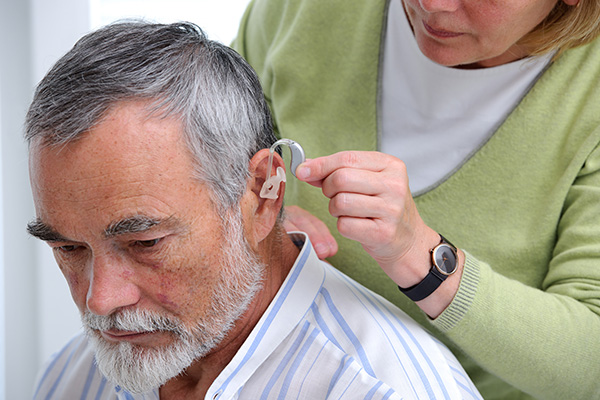How Does an Audiologist Conduct a Hearing Test?
A hearing test gives you the opportunity to determine whether you’re

After you have made an appointment with your audiologist and you have gone through a hearing test, they will go through the results with you to help you understand what kind of hearing loss you have. To do that, they’re going to use a chart known as an audiogram.
Your hearing test results are present on this audiogram, a diagram that acts as a detailed description of your range of hearing and hearing loss. It will help you select the hearing aid best suited to your needs. Here, we’re going to explain how to understand the audiogram and, as a result, your hearing test.
The audiogram is a graph that shows two axes. The axis shown on the left will display numbers ranging from 10-120 in descending order, which shows the volume in decibels that you can hear the sound at. The axis at the top shows the pitch or frequency of the sounds that have been tested. Your hearing will be tested for low pitch sounds, such as thunderclaps, bass drums and deep male voices, as well as for high pitch sounds, like whistles, child voices or birdsong.
There may be a scale on the right-hand side of the audiogram, which describes the different levels of hearing loss. For instance, if you cannot hear sounds under 25 dBs, that’s a normal range of hearing. If you cannot hear sounds under 40 dBs in a certain pitch, that’s mild hearing loss. If you cannot hear them under 70 dBs, that’s moderately severe hearing loss, and so on.
During the hearing test, your audiologist will expose you to different volumes of noise at different frequencies. As they do this, they will mark on the audiogram the decibel volume at which you can start to hear sounds within that frequency. You may be able to hear some frequencies as low volumes but be unable to hear other frequencies until they have a higher decibel volume, which denotes some level of hearing loss. The audiologist will most likely start at a high volume that audible to most, before slowly decreasing the volume until they find the point that you can no longer hear it. When you can’t hear it, they mark to show the lowest volume you can hear at each tested frequency or pitch.
In most cases, hearing loss affects both ears equally, meaning that you are able to hear the same range of frequencies at the same volume levels in both ears. However, in some cases, you may have asymmetrical hearing loss, which means you can hear at some frequencies better in one ear than you can hear in the other ear.
The same audiogram is used to chart your level of hearing for both ears. However, if you have asymmetrical hearing loss, you may have one chart for each ear, or your audiologist might show the range of hearing for both ears on one chart, with each ear’s range of hearing shown using a different color or mark to set them apart.
Different audiologists use different symbols that mark the threshold of your hearing on an audiogram, depending on the testing conditions. If they test using headphones, this is known as air conduction testing, and normally the results are marked using red O for the right ear and a blue X for the left ear. These marks will also have colored line drawn between them, showing how your hearing range moves up and down depending on the frequency of the sound.
With a bone conduction test, during which a device is positioned behind the ear to test the reaction of the mastoid bone, the results might be marked with a [ or < symbol instead. Regardless of which tests are carried out and which symbols are used, the audiologist will also explain the audiogram to you, so don’t worry if you can’t remember how to read your results after the test.
Hopefully, we’ve helped you understand how, exactly, the audiologist will test your hearing and how you will be able to read the results. Following the test, you will be given a report of the visit, which should include a copy of audiogram. It’s important to keep this, as it’s a prescription that can help you choose the right hearing aid later.
Whether you want a hearing test and an audiogram to show your potential hearing loss clearly, or if you already have an audiogram and need help choosing a hearing aid, don’t hesitate to get in touch with Tops Hearing & Balance Center at 281-920-3911. We’re glad to answer any questions and help you on the next step in your hearing health journey.

A hearing test gives you the opportunity to determine whether you’re

Do you find that you often have to ask for people to repeat what they are

Hearing loss is something that affects around 20% of the population of the